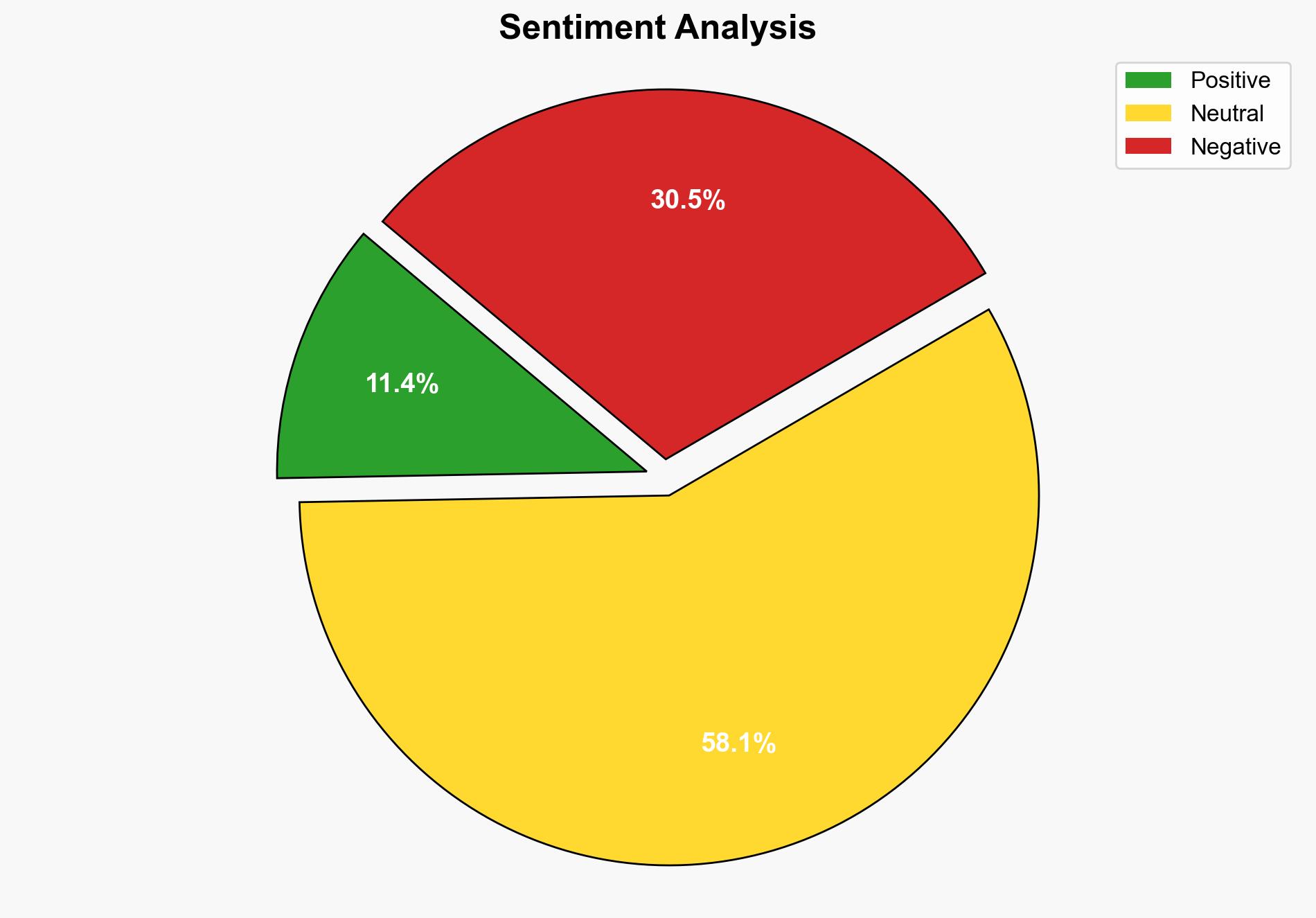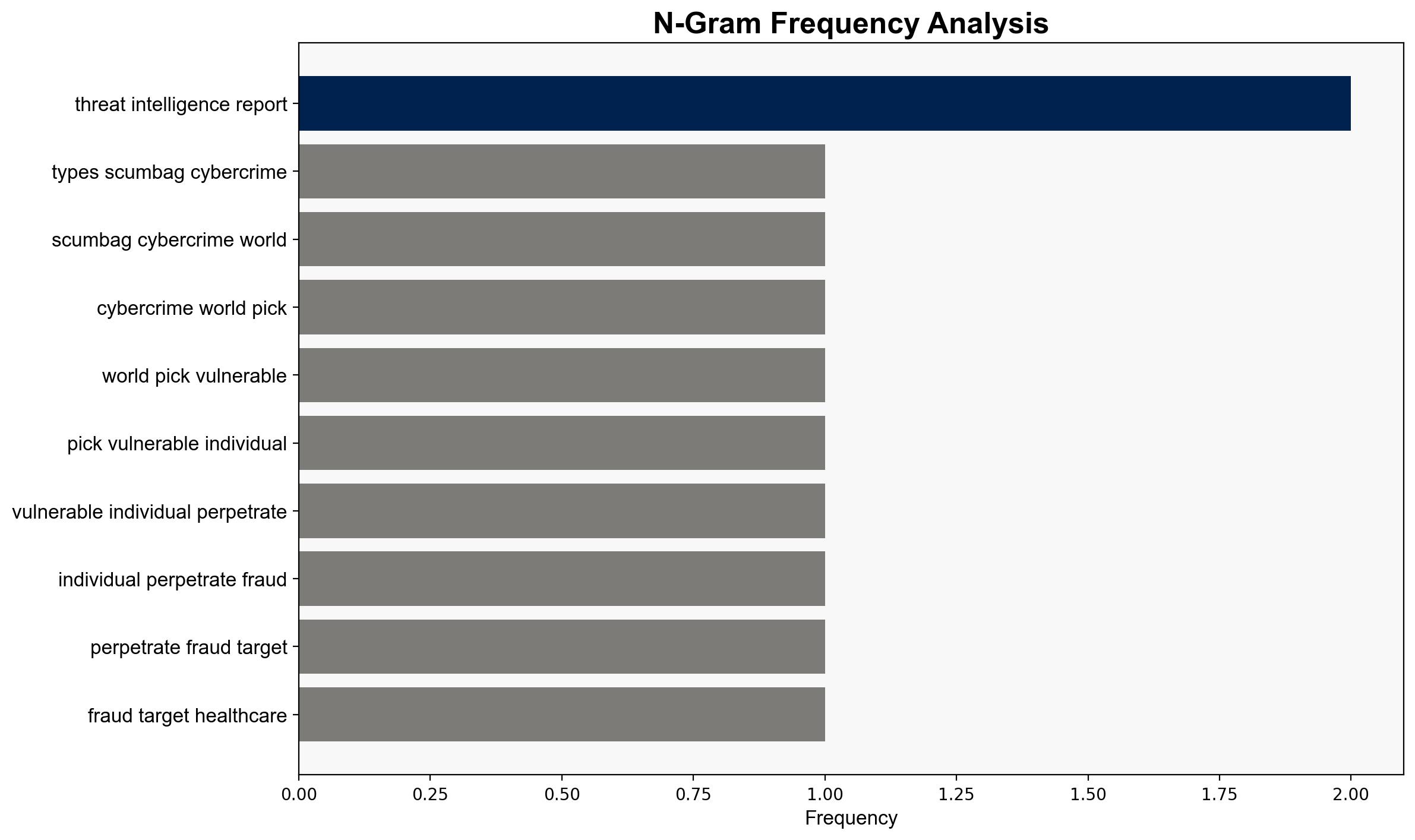Chinese Ghost Hackers Hit Hospitals And Factories In America And UK – Forbes
Published on: 2025-04-20
Intelligence Report: Chinese Ghost Hackers Hit Hospitals And Factories In America And UK – Forbes
1. BLUF (Bottom Line Up Front)
Recent cyberattacks attributed to a financially motivated group known as “Ghost” have targeted hospitals and factories in the U.S. and UK. These attacks involve sophisticated ransomware techniques, posing significant risks to critical infrastructure. Immediate enhancements in cybersecurity measures are recommended to mitigate these threats.
2. Detailed Analysis
The following structured analytic techniques have been applied:
Analysis of Competing Hypotheses (ACH)
The primary motivation behind these attacks appears to be financial gain rather than state-sponsored espionage. The Ghost group, originating from China, has not shown direct state affiliation, suggesting a focus on profit through ransomware and data exfiltration.
SWOT Analysis
Strengths: Advanced ransomware deployment techniques and stealthy network infiltration.
Weaknesses: Reliance on known vulnerabilities and backdoors, which can be mitigated with updated security protocols.
Opportunities: Increasing awareness and investment in cybersecurity can reduce attack success rates.
Threats: Continued evolution of tactics and potential for widespread disruption in critical sectors.
Indicators Development
Key indicators of emerging threats include unauthorized access attempts on public-facing systems, unusual network traffic patterns, and the presence of known malware signatures such as “Ghost.exe” and “Cre.exe.”
3. Implications and Strategic Risks
The Ghost group’s activities highlight vulnerabilities in healthcare and industrial sectors, posing risks to patient data and operational continuity. Economically, these attacks could lead to significant financial losses and undermine trust in digital infrastructure. Politically, they may strain international relations if state involvement is suspected.
4. Recommendations and Outlook
- Enhance cybersecurity frameworks by regularly updating systems and employing multi-factor authentication.
- Conduct regular security audits and vulnerability assessments to identify and patch weaknesses.
- Implement network segmentation to limit lateral movement within systems.
- Develop incident response plans to quickly address and contain breaches.
- Scenario-based projection: If current trends continue, expect increased targeting of critical infrastructure sectors, necessitating proactive defense strategies.
5. Key Individuals and Entities
Rebecca Harpur, BlackFog.





